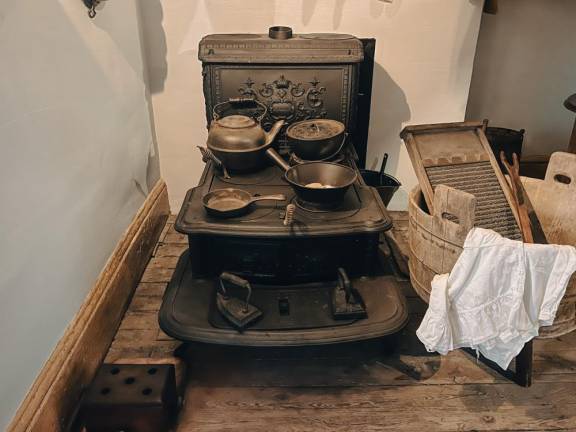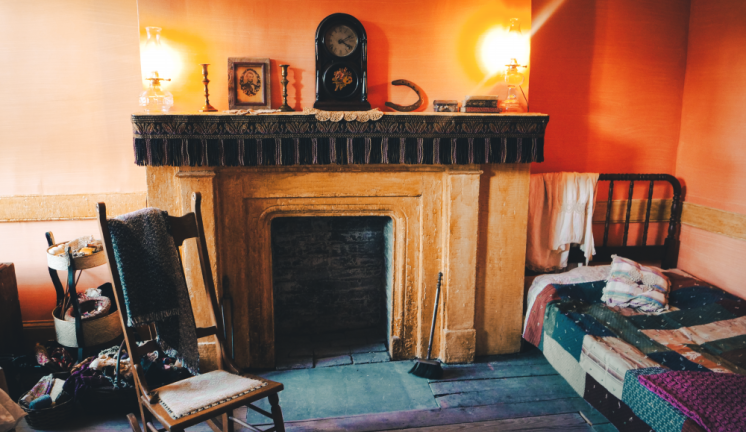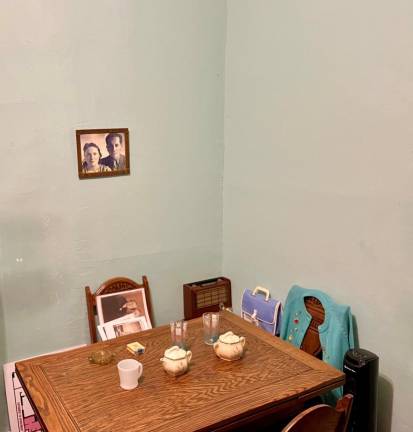Tenement Museum Opens Its First Exhibit Dedicated to a Black Family That Moved into Area in the Civil War Era
The latest exhibit at the Tenement Museum features the Moores, a black family that moved into the Eighth Ward shortly around the time of the Civil War. The museum had to stretch a bit to introduce its first ever black family because the Moores did not actually reside in the building that is at the center of the museum.



We are all proud of our original heritages and those that we identify with as Manhattanites. For everyone, New York City has the Tenement Museum to remind us us that for many, living here was not so easy. This Lower East Side venue has grown during its 35 years and reminds many of us of our roots when the area that is now upscale SOHO was once a hard scrabble corner of the city known as the Eighth Ward.
The newest interpretive exhibit focuses on a new sector; Black Americans told through the lens of the Moore family who moved into in the Eighth Ward from New Jersey shortly after the Civil War ended. The museum, in a bid to highlight the Black experience, bent its own rules a bit since the Moores did not actually reside in the building on Orchard Street that at the time contained 22 apartments and a saloon in the basement. All the other diverse tenants highlighted by the museum had actually lived at the address. The building that now houses the museum was only built a few years before the Moores arrived but it had always been a tenement, housing successive waves of residents near the bottom of the economic pyramid, looking to better themselves.
“Too often the stories of Black New Yorkers in the 19th century have been written out of history,” said Annie Polland, president of the Tenement Museum. “With ‘A Union of Hope’ we expand our understanding of migration to New York City, by highlighting an untold story from the Civil War era. Decades before Harlem became a Black neighborhood, Lower Manhattan had the largest Black neighborhood in the north, with a crucial network of churches, mutual aid associations, schools and newspapers.”
“A Union of Hope” is the only permanent exhibit in New York focused on 19th century Black history during and after the Civil War. Noting the confluence of Black history and immigration in New York, it notes historic moments from the Draft Riots to the passage of the 15th amendment.
This interpretive exhibit tells the story of Joseph and Rachel Moore and their journey from the free Black communities of Belvidere, New Jersey and Kingston, New York to the Eighth Ward in Lower Manhattan. Today’s SoHo when the Moore family moved in was the heart of the city’s Black community before urban development drove many residents away from that neighborhood.
About the Museum
Since it’s opening 32 years ago at 97 Orchard Street, the original building, now all of us can peer into the unvarnished past, where 7,000 New Yorkers from 20 nations occupied its apartments between 1865 and 1935, when its landlord evicted the tenants, sealed the upper floors and refused to bring the building up to code. The apartments sat untouched until 1988, when Ruth Abram and Anita Jacobson found this time capsule during a search for a property to house a museum paying tribute to New York’s immigrant tenement culture.
In conjunction with the Museum’s acquired building at 103 Orchard Street which borders on Delancey Street, there are different interpretive settings for families from China, Eastern Europe, Germany, Greece, Ireland, Italy, Puerto Rico, and Russia, spanning the 19th and 20th Centuries. Now, stories of historic immigrant, migrant, and refugee families help to define an inclusive and expansive American identity. This is their legacy, a thriving 2024 Manhattan, New York City and United States.
When you take a tour here, you learn
Straus News Manhattan recently took the “Finding Home” tour, which chronicled the the Epstein and Saez Velez families in the 1950s and 1960s at 103 Orchard Street. While they shared the same apartment line, the changing Lower East Side meant different experiences for the Epsteins, Jewish Holocaust survivors and the Saenz Velez family, who were Puerto Rican migrants.
In a quite moving portrayal of both resident families, our expert tour leader, Daryl Hamilton provided an engaging, thought-provoking 75 minute look into their mid-century lives, and what it meant to live in the heart of the Lower East Side. Indicative of the museum’s excellence, everyone that participated in the tour walked out with a new sense of empathy for those whose Orchard Street existences were a steppingstone to a better, richer, fuller life elsewhere.
Don’t waste a Spring afternoon, just head to the Lower East Side for some very powerful learning.
For more information on the museum: www.https://www.tenement.org